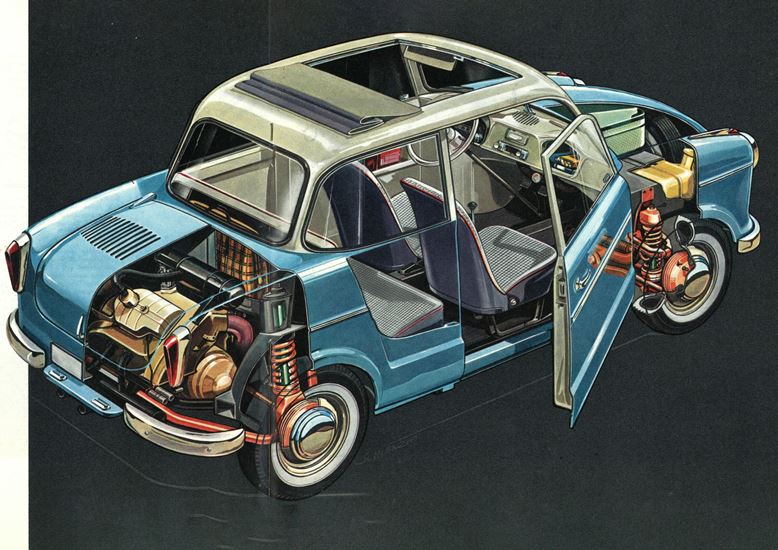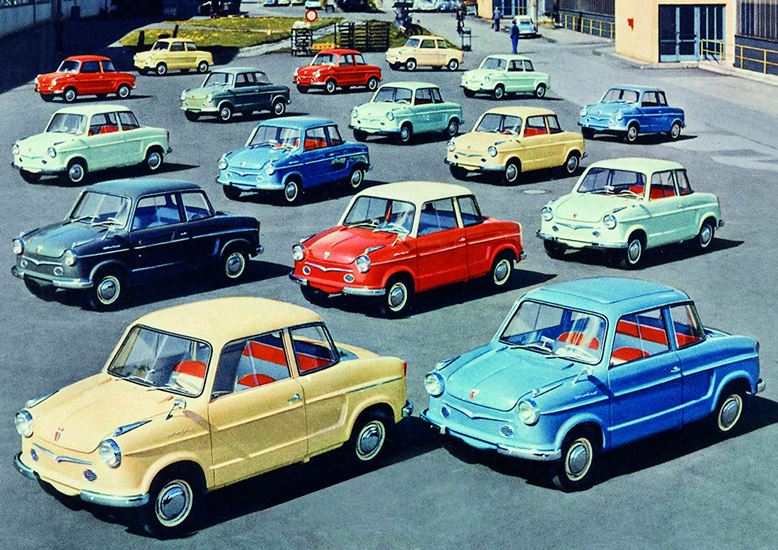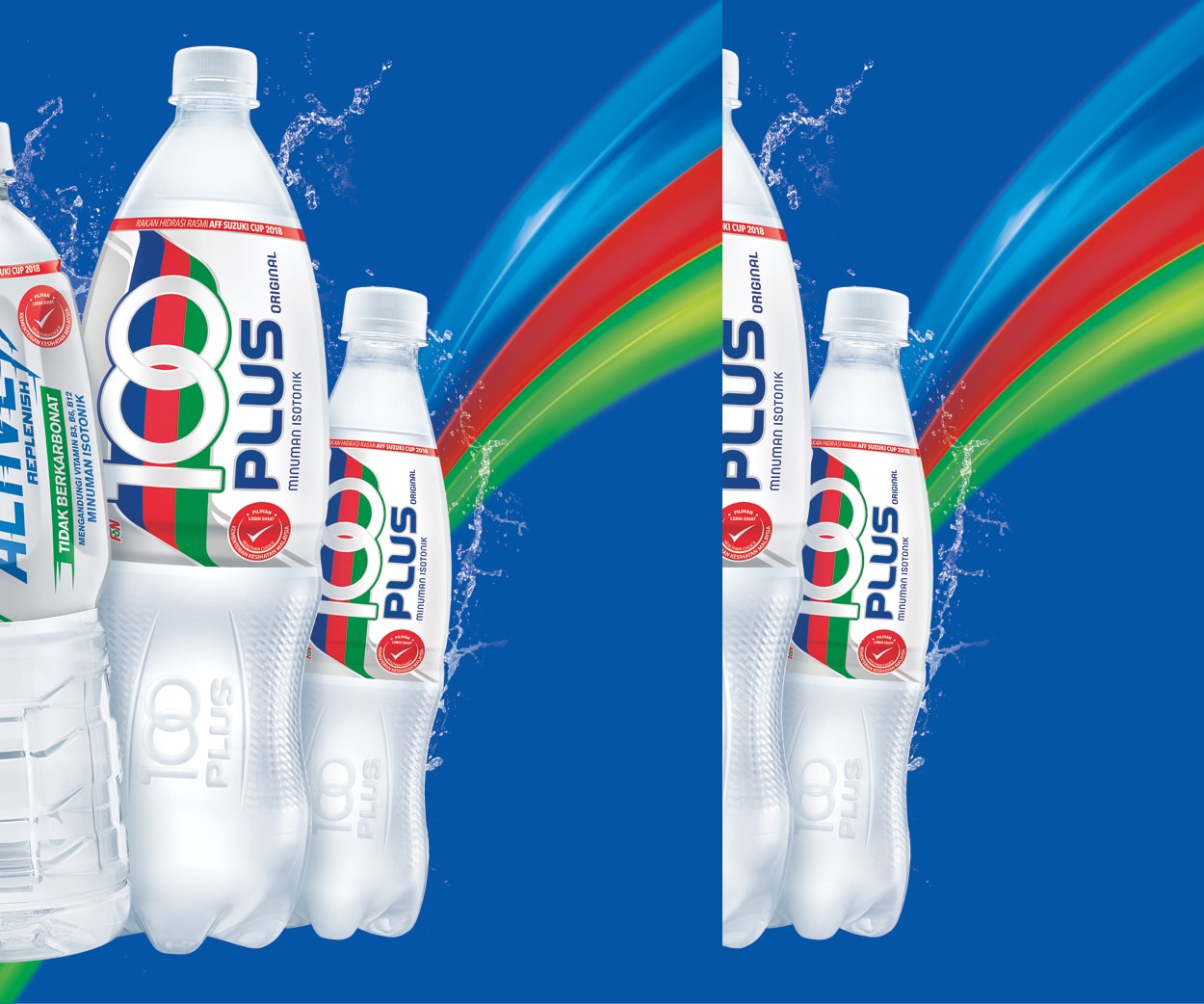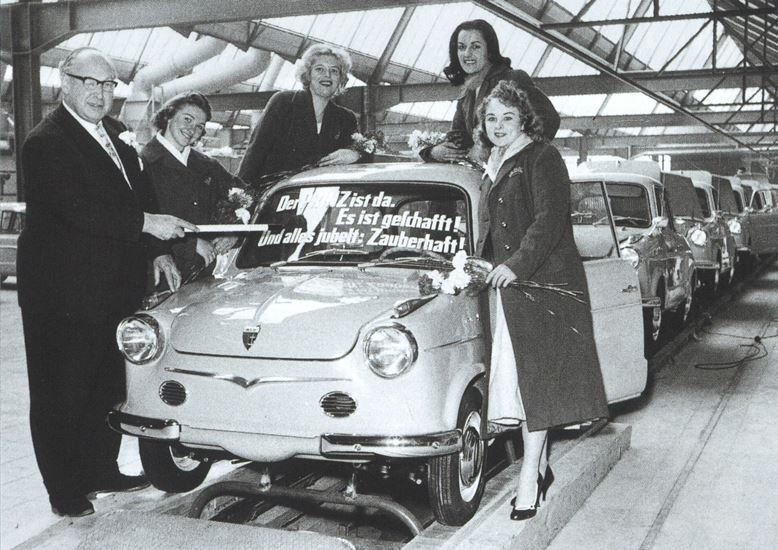 The NSU Prinz: the first post-war car made in Neckarsulm
The NSU Prinz: the first post-war car made in Neckarsulm
150 years of NSU: Audi Tradition launches its ten-part series with classics and one-offs from NSU’s diverse model range.
The traditional NSU brand, celebrating its 150th anniversary in 2023, represents transformation. This is best exemplified in the 1950s by the compact NSU Prinz. In 1955, NSU was the largest employer in the Neckarsulm region and the industry leader as the world’s largest manufacturer of two-wheeled vehicles.
But demand for motorcycles was in decline: As prosperity grew, so did people’s desire for a “roof over their heads” – they wanted to drive cars. So NSU reinvented itself, launching a successful comeback as a car manufacturer with the NSU Prinz in 1958. In this first episode of the history of NSU, Audi Tradition presents “the Prince”.
It is the time of the Miracle on the Rhine: After the devastation of World War II, the 1950s see Germany’s economy pick up again. Incomes are rising, and more and more people can afford a car. At NSU, however, the transition from two to four wheels was not immediate; initially, the development division experimented with a three-wheeler called the Max Kabine.
The name was derived from an NSU motorcycle, the NSU Max. But the Max Kabine prototype’s performance in test drives was not promising and so, at the end of 1955, NSU management instead gave the green light for the compact car project.
Expanding a two-wheeler factory into an automobile plant is quite a feat – in organizational as well as financial terms. But thanks to a bank loan of around 30 million marks at the time, and a guarantee, granted by the state of Baden-Wurttemberg, NSU was able to complete the plant as planned.
All the while, a development team was working on the new car project. As early as mid-1956, the first three prototypes of the new NSU car took to the road for testing and were ready for series production just one year later. In the summer of 1957, the Neckarsulm-based company unveiled the NSU Prinz, initially called the NSU Lido, in pre-series production.
The NSU Prinz was a modern two-door sedan with a self-supporting all-steel body. The car’s brochure states: “The Prinz offers everything that is expected of a car in its class today: pleasing proportions, enough space for four adults, excellent engine power, top driving characteristics, and good driving comfort.”
NSU opted for a rear-engine design with a 20 hp two-cylinder motor and offered two models. The Prinz I was a trimmed-down basic version, which only came in light green, while the Prinz II, was the so-called export version, with chrome stabilizer bars front and rear, Prinz lettering on the side, a dashboard instrument cluster, and wind-down windows.
The Prinz II was available in a wide range of colors: Calla white, indigo blue, cedar green, lava gray, and Sahara beige, to name a few. At launch, the basic NSU Prinz cost 3,645 marks, while the Prinz II was available ex works for 3,985 marks.
 Anticipated economic success for later Prinz family members
Anticipated economic success for later Prinz family membersThe first NSU Prinz rolled off the assembly line in March 1958. The 6,500 NSU employees at the time had high hopes for this small car. However, sales success was not immediate: During its production period (1958 to 1960), only 1,648 of the Prinz I models were sold; customers clearly preferred the more luxurious Prinz II, which sold 62,587 units during its three-year production period.
In 1959, the company launched another version, the NSU Sport Prinz, with a unique body shape inspired by the Italian design trends of the time. First unveiled in 1961, the company’s new slogan boasted: “Drive a Prinz and you’re a king.” („Fahre Prinz und du bist König“) After the NSU Prinz III (of which 30,332 were built between 1960 and 1962), it was the newly developed successor, the Prinz 4, that began to win over most drivers from 1961 onwards.
Up to 1973, a total of 576,619 Prinz 4 cars were made.Following the domination of the small car segment by the Prinz 4, NSU ventured to establish a more upmarket position in 1964, when the Neckarsulm-based company entered the lower mid-size class with the Prinz 1000.
To this day, the little Prinz has a loyal – and not insignificant – fan base that regularly organizes rides, club meetings, and even racing series.
Each month from March to December, Audi Tradition is presenting a different NSU model, including brand classics on two and four wheels, prototypes, and one-off models. Each episode of the ten-part series focuses on an individual model of the NSU brand.
If you want to delve deeper into NSU’s complex product history, we recommend the Audi Tradition Edition book “NSU-Automobile. Typen – Technik – Modelle”, written by Klaus Arth and published by Delius Klasing Verlag.

































